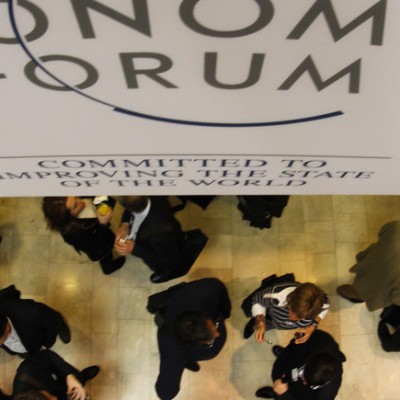In 2015 The Citizens Foundation has won the prestigious Social Entrepreneur of the Year by the renowned Schwab Foundation, which annually selects outstanding social entrepreneurs for their innovative approaches and their potential global impact.
For this reason, TCF has been invited to Davos at the World Economic Forum. We report here a wonderful interview released on January 17 by Mushtaq Chhapra, president and founder of TCF.
What does it take to bring excellent schools to the world’s poorest areas? Mushtaq Chhapra of The Citizens Foundation (TCF), which runs schools in deprived and remote communities in Pakistan, talks to us about education, social change and why all of his foundation’s teachers are female.
Since 1996, you’ve built 1,060 schools for 165,000 children across 100 different locations in Pakistan. How have you achieved this?
We bring quality education to the children within a neighbourhood rather than drawing the children out of the community. This is probably the single most successful thing, considering the security situation in Pakistan. The parents are not comfortable with sending their daughters out of their hamlets and communities. When we start a new school, we identify a location where there are no schools at all. We go and sit with the community elders and explain to them what the schooling system is and how it is going to benefit the kids from that area. Then we go and build a proper, formal school. Our ethos is that TCF doesn’t believe in poor schools for poor children, so we really have state-of-the-art, fully equipped buildings in the poorest of the poor neighbourhoods, because that’s our belief. Our schools have classrooms, a library, a computer lab and science labs for the senior grades, a play area for the children and an administration block. The learning is interactive, and the children are encouraged to think critically. So all these elements put together make The Citizen’s Foundation’s programme and the system what it is today. It’s easily scalable, it’s replicable. That’s how we have gone from five schools to 1,060 in less than 20 years.
What is special about your curriculum?
The curriculum has to be based on the national curriculum of Pakistan, but we can improvise, we can add to it. Over the years, we have developed an enhanced version of the curriculum. For example, we work with books published by the Oxford University Press, but we assigned a group of educators to modify the books and make them relevant to the realities of the children in the slums and the villages. The books are project-based and promote critical thinking. It’s contextual learning, so the examples are not of Peter and Jane but of children with local names, which makes it more relevant. We adapted the books to the needs of the kids.
What is the role of teachers in making your project a success?
We aim for a gender balance of 50-50 for girls and boys, and to attain that we only employ female faculty. Last year we had 7,700 teachers, this year we have 8,900, next year we plan to add six or seven hundred more. Our students have a 92% pass rate at the matriculation level, compared to 56% of children attending government schools. Almost half of our children are coming out with A and A+ grades, whereas the government percentage is about 25%. We have a central education team that looks after the curriculum and teacher training, and we have a quality assurance unit that actually visits and monitors schools and organises centralised exams. Every year we develop a training curriculum specific to the needs of the faculty. So even though they’re very remote, these schools are not left to fend for themselves.
What has been the impact of your schools on the wider community?
The villagers or slum dwellers see the school as a community centre, it is not just restricted to the children. We have also started an adult literacy programme for women. We have mentoring programmes. We offer clean water at almost 60% of our schools, the children drink that clean water and can also take it home. It’s a community development project now, and we work with non-profit partners. You can tackle so many other social issues through education.
What is your next goal?
We want to use our experience to improve government schools and the private school sector, which has grown exponentially in the last 15 years. There are 57 million out-of-school children in the world, but there are 250 million children who are illiterate and innumerate despite being in school because of the extremely poor quality of the teaching. We offer those schools a whole menu of services, from good books to teacher training, and we are also looking at radio and audio programmes for children who are out of school. Another option would be to entirely take over a government school, run it on behalf of the government by employing staff and by implementing all the points from our menu. Our aim is to reach 1.5 million children.
For which regions other than Pakistan would your model be most relevant?
South Asia would be the starting point, anywhere in Bangladesh, Nepal, India. Not Sri Lanka, because they are so far advanced in their educational endeavours. And I would say even Africa, but there we would need to do a lot more work in terms of implementation and translation. Our model works best where there is some security. For example, one of the issues in conflict areas can be finding faculty. We have not opened any schools in the north of Pakistan because of the conflict with the Taliban. We cannot find female teachers there.
What is your advice for someone starting a similar project?
The first step would be to come to Pakistan, spend some time with us on the ground and see how the system works. We offer teacher training and are also developing a product called “TCF In A Box”, with all kinds of information on how to run a school. Finally, we are working on radio or audio education. So these are the three products we could export. My other advice would be to really listen to the people on the ground and adapt the model to suit them. Every child anywhere in the world should have a proper chance to go to school.






